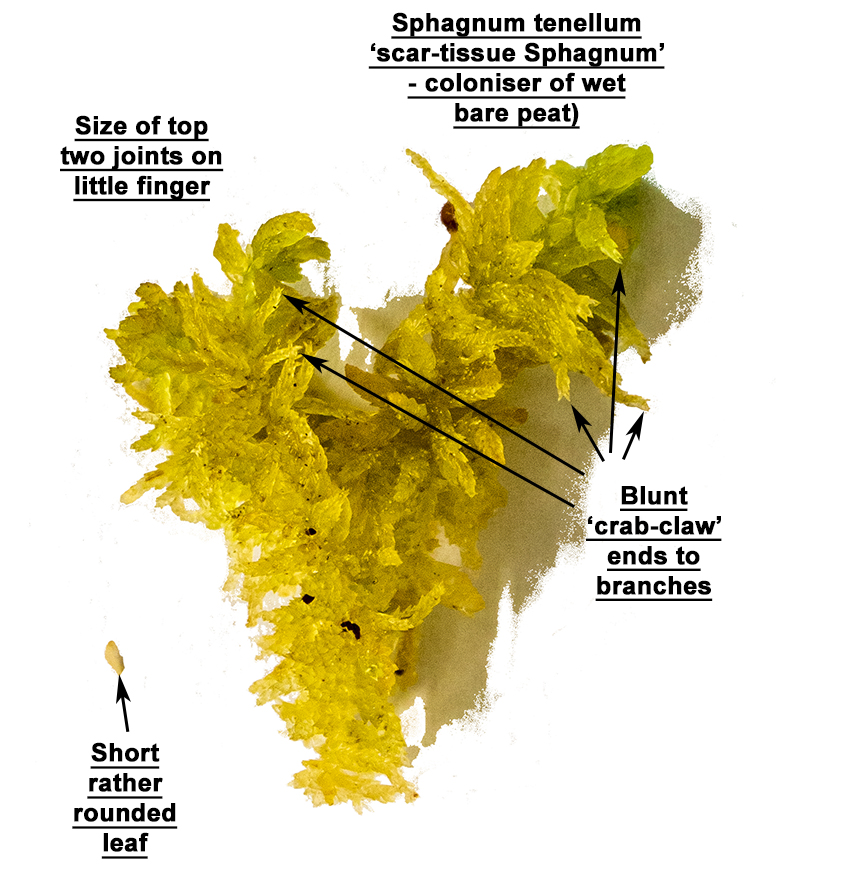A shallow pool, but a feature of former peat cutting rather than a natural bog hollow - so a secondary A2 'mud-bottom hollow' or A3 'drought-sensitive pool'.
Aulacomium palustre

Narrow (2 m) lagg fen around the margin of the bog. On the west side this lagg fen is calcareous and botanically rich. It also includes a remarkable example of a tiny blanket bog, rich in carnivorous plants growing in Sphagnum, on a small boulder.
Note the break in slope here, indicating peat removal at some distant time in the past as the peat face is now completely vegetated and has slumped to a gentle gradient. There are many such features across the norther and central parts of Waun Ddu.
Sphagnum tenellum

Faint dark line visible here indicates an ancient peat face where peat was removed in the distant past. Fresh peat formation in the cut area has almost infilled the old cutting.
Polytrichum commune

Note bare peat or peat covered by thin layer of Campylopus-style mosses dominating the ground between low tussocks. This is a good example of 'micro-erosion' microtopography.
Close-cropped, largely tussocky, vegetation though with a relatively high water table because the peat is dense as a result of heavy trampling by grazing stock. Dense peat results in more extreme vertical water table movements, thus giving rise to further peat decomposition and densification.